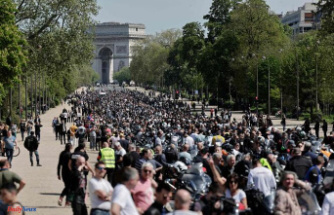In this war-torn country, which covers almost four times the area of France, most of the rural population has little access to state facilities, if only because of the dilapidated and incomplete infrastructure. Supported by international governmental and non-governmental organizations, the Congolese judiciary therefore relies on "mobile courts", which are to administer justice where they are needed: in the remote villages and settlements where the acts were committed.
Patrick Hönig, author of the book "An End to impunity? Mobile courts in the east of the Democratic Republic of Congo" think little of this institution, which is highly praised especially in human rights circles in the West. The lawyer with a focus on international law has already worked for various governmental and non-governmental organizations, including in Congo. He doubts that mobile courts meet the needs of the local population for three main reasons: neither the rights of the accused would be respected in the proceedings, nor would the injured parties be able to get their rights. The courts also contribute little to finding the truth, because there is hardly any interest in a comprehensive clarification of the cases being heard.
Bild: VerlagThe concrete difficulties of mobile courts, which Hönig enumerates on the basis of three case studies, are often plausible. For example, he reports on unsustainable prison conditions, on defendants who die before the end of a trial in the custody cell because diseases such as cholera break out and there is neither water nor sufficient food; on victims of sexual violence who have to fear for their lives after testifying in court, and on sometimes hundreds of cases that are heard within a few weeks and are thus more reminiscent of assembly line work than of the feeling of enlightenment.
The historical references to which Hönig addresses are also interesting. For example, he points out that the original purpose of mobile courts during the colonial era – to stabilize a system of rule designed for oppression and exploitation – continued even after independence. For this reason, too, the justice system in Congo, which is still characterized by corruption and arbitrariness, is hardly accepted by the population. In addition, the language of negotiation, French, is understandable only to the fewest inhabitants of the rural areas; neither accused nor injured parties are sufficiently informed about their rights.
While one would like to agree with Hönig on many points of his criticism, the conclusions he draws from it often seem unconvincing. That law enforcement alone is not a panacea, he explains in detail. The more exciting question of whether the mobile courts in Congo are at least a step in the right direction remains largely unanswered.
Date Of Update: 02 November 2021, 00:00











